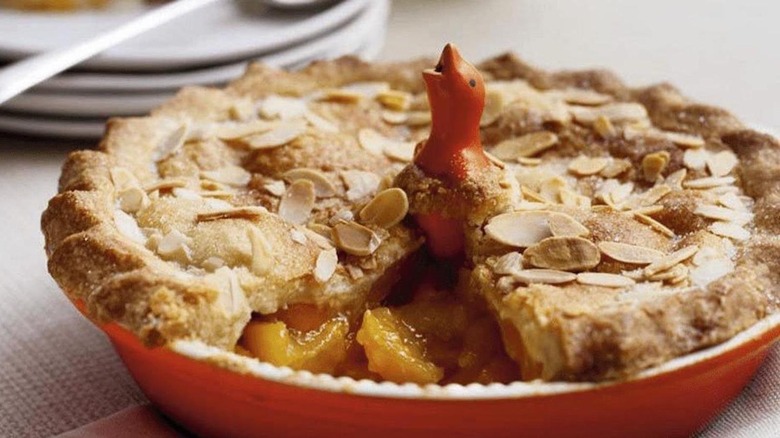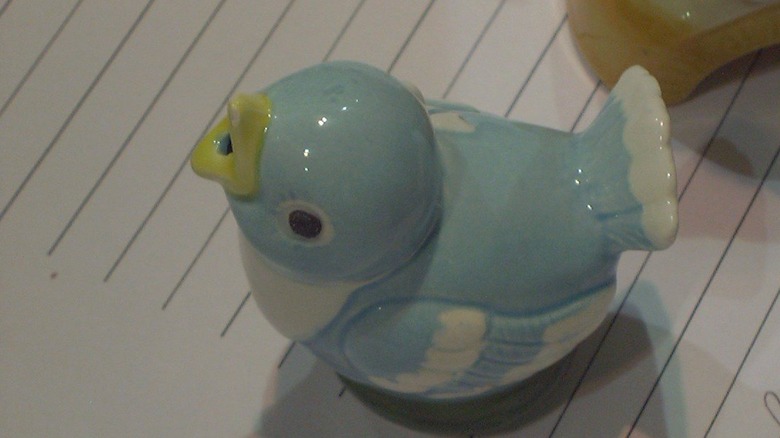A Pie Bird Is The Quirky Tool That's Just As Practical As It Is Decorative
Just because an idea is two or three hundred years old, that doesn't make it a bad thing. Electric lights, telephones, moving pictures, anesthesia, and more were all inventions of the Victorian era that we still use today. However, one curious baking tool that historians believe may have become popular during the 1800s may not be as familiar.
The pie bird is a product of its times. Along with breakthroughs in science and art, the Victorian era is remembered for being ornate. In other words, methods and practices were often just as important for their aesthetics as they were for their functionality. The pie bird offers a little of both.
These hollow ceramic figurines were baked into pies. Not only did this tiny tool add a whimsical look to desserts, but it also served a functional purpose or two as well. A pie bird provided a decorative vent for steam while also supporting the top pie crust to keep it from sagging in the middle.
How does a pie bird work?
A pie is a surprise that you can eat. The treat is nestled inside the crust, so your taste buds get to experience a sense of adventure on that first bite. However, during baking, the inner ingredients get hot and expand. If you don't vent your pie crust, the filling can bubble up and make sections of the dough soggy.
Using a pie bird is simple. Place the ceramic figure on the bottom crust and add the filling around the pie bird. Cut a small "X" in the center of the top layer, and make sure the bird pokes through at that point. It's that easy.
While these items aren't essential — you can vent a pie without the decoration — they add an element of fun. If birds aren't your thing, you'll be happy to know that these ceramic items come in a wide assortment of designs, ranging from singing birds to Christmas and Halloween-themed items, so you can always have a pie bird that is perfect for the occasion.

